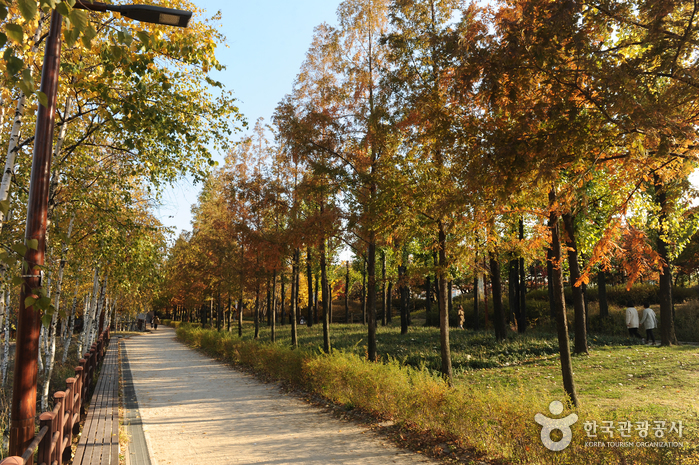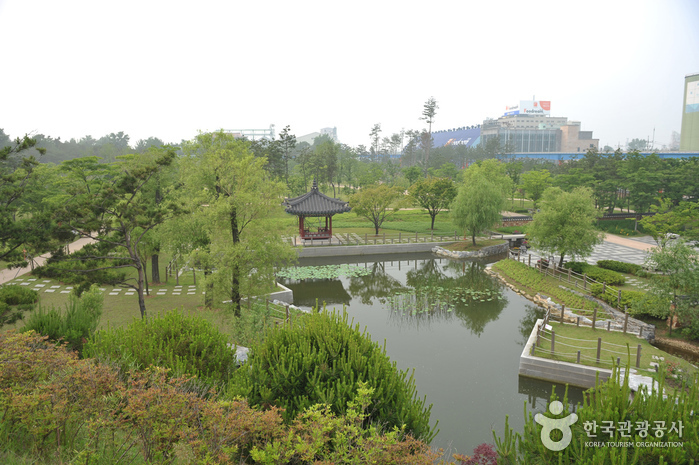Medicoper (메디코퍼)
18.2Km 2025-10-23
(6th Floor), 588 Inju-daero, Namdong-gu, Incheon
Founded in 2014, Medicoper provides a wide range of services, including medical marketing and consulting, international patient attraction, medical tourism, travel arrangements, and wholesale/ retail/international trading of medical devices, cosmetics, and health food. Based on Korea's advanced medical technology and tourism resources, we have been working toward developing and disseminating medical products for international visitors and residents in Korea. We have signed agreements with several large and small hospitals in Incheon and Seoul to create and sell medical tourism products, including specialized medical specialties that utilize each hospital's strengths to the fullest. We will continue to provide high quality services based on our know-how from extensive practical experiences.
Olive Young - Yeonsinnae Beomseo Branch [Tax Refund Shop] (올리브영 연신내범서)
18.2Km 2024-04-18
842, Tongil-ro, Eunpyeong-gu, Seoul
-
CheongKwanJang - Gaebong Branch [Tax Refund Shop] (정관장개봉점)
18.2Km 2024-06-27
1-101, 6, Gaebong-ro 20-gil, Guro-gu, Seoul
-
Seonyudo Park (선유도공원)
18.2Km 2025-10-27
343 Seonyu-ro, Yeongdeungpo-gu, Seoul
Seonyudo Park is Korea's first water-themed ecological park. The park was renewed from an old water treatment plant. Visitors can observe a water purification system, an aquatic plant garden, and an ecological forest, as well as exhibitions and other interesting facilities. The park also hosts diverse hands-on programs and exhibitions.
Wolmi Park (월미공원)
18.2Km 2025-01-08
131-22 Wolmi-ro, Jung-gu, Incheon
+82-32-765-4133
Wolmi Park, once a military zone for 50 years following the Korean War (1950-1953), has been transformed into a park preserving its natural ecosystem. Centered around Wolmi Mountain, the park features traditional Korean gardens such as Palace Garden, Hermitage Garden, and Tradition Private House Garden. Visitors can enjoy views of Incheon Port and the sunset over the Seohae Sea from the nearby Wolmi Observatory. It is conveniently located near Wolmi Cultural Street.
Himart - Juan Branch [Tax Refund Shop] (하이마트 주안점)
18.2Km 2024-04-19
757, Gyeongwon-daero, Michuhol-gu, Incheon
-
Sky & Sea Hotel (인천영종도 하늘과바다호텔)
18.2Km 2024-07-25
36 Eunhasu-ro 29beon-gil, Jung-gu, Incheon
Sky & Sea Hotel is a seaside hotel with rooms overlooking the sea and a range of restaurants in the area. Jacuzzi rooms are available for a relaxing stay, and the hotel has a breakfast bar for guests to use.
LG Best Shop - Incheon Main Branch [Tax Refund Shop] (엘지베스트샵 인천본점)
18.2Km 2024-04-18
482, Inju-daero, Michuhol-gu, Incheon
-
Lotte Mart - ToysRus Seoul Yangpyeong Branch [Tax Refund Shop] (롯데마트 토이저러스서울양평점)
18.2Km 2024-04-22
138, Seonyu-ro, Yeongdeungpo-gu, Seoul
-
Lotte Mart - Seoul Yangpyeong Branch [Tax Refund Shop] (롯데마트 서울양평점)
18.2Km 2024-04-22
138, Seonyu-ro, Yeongdeungpo-gu, Seoul
-

![Olive Young - Yeonsinnae Beomseo Branch [Tax Refund Shop] (올리브영 연신내범서)](http://tong.visitkorea.or.kr/cms/resource/83/2889383_image2_1.jpg)


![Himart - Juan Branch [Tax Refund Shop] (하이마트 주안점)](http://tong.visitkorea.or.kr/cms/resource/52/2882752_image2_1.jpg)
![LG Best Shop - Incheon Main Branch [Tax Refund Shop] (엘지베스트샵 인천본점)](http://tong.visitkorea.or.kr/cms/resource/50/2882750_image2_1.jpg)
 English
English
 한국어
한국어 日本語
日本語 中文(简体)
中文(简体) Deutsch
Deutsch Français
Français Español
Español Русский
Русский